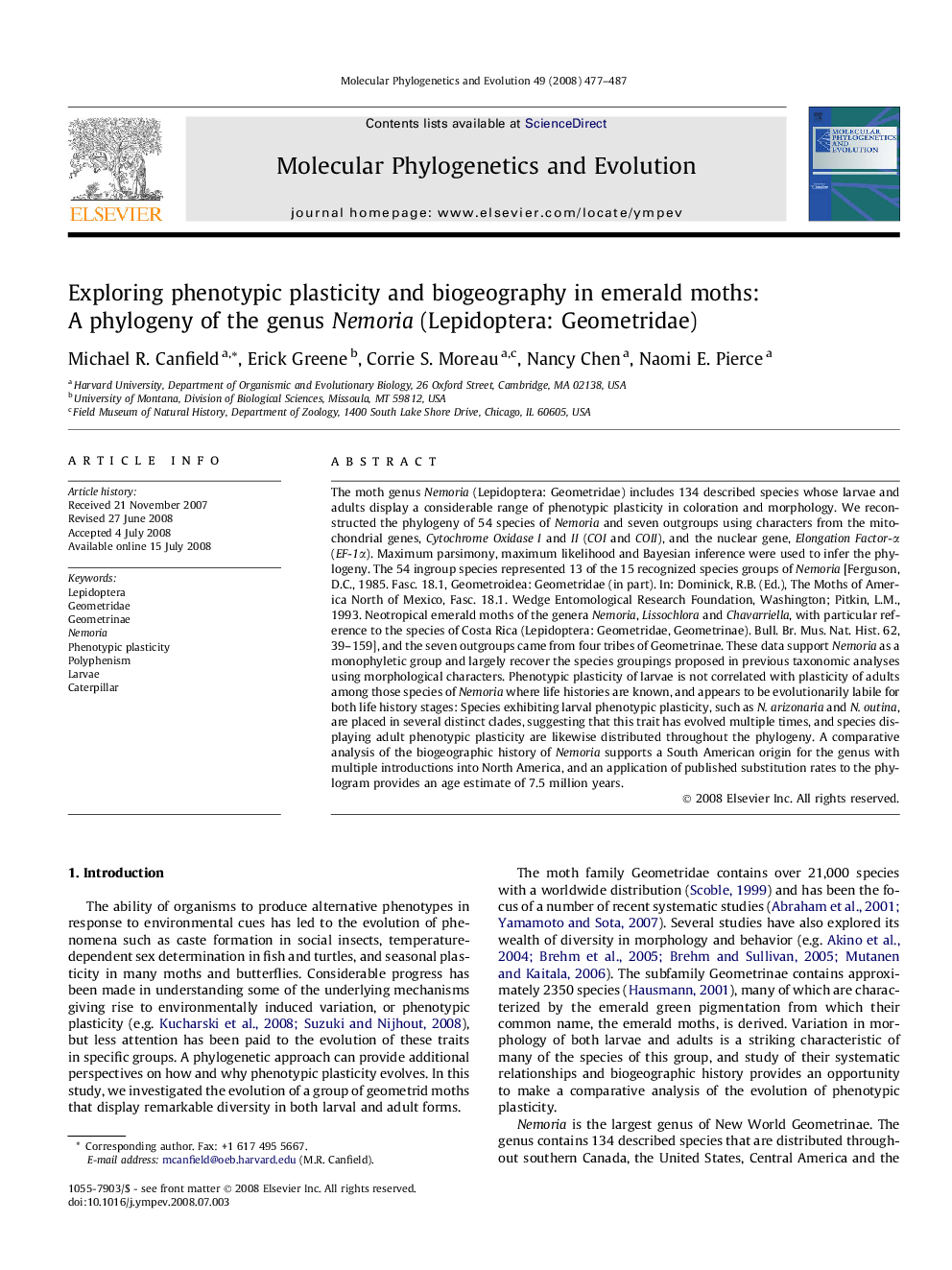| کد مقاله | کد نشریه | سال انتشار | مقاله انگلیسی | نسخه تمام متن |
|---|---|---|---|---|
| 2835115 | 1164333 | 2008 | 11 صفحه PDF | دانلود رایگان |

The moth genus Nemoria (Lepidoptera: Geometridae) includes 134 described species whose larvae and adults display a considerable range of phenotypic plasticity in coloration and morphology. We reconstructed the phylogeny of 54 species of Nemoria and seven outgroups using characters from the mitochondrial genes, Cytochrome Oxidase I and II (COI and COII), and the nuclear gene, Elongation Factor-α (EF-1α). Maximum parsimony, maximum likelihood and Bayesian inference were used to infer the phylogeny. The 54 ingroup species represented 13 of the 15 recognized species groups of Nemoria [Ferguson, D.C., 1985. Fasc. 18.1, Geometroidea: Geometridae (in part). In: Dominick, R.B. (Ed.), The Moths of America North of Mexico, Fasc. 18.1. Wedge Entomological Research Foundation, Washington; Pitkin, L.M., 1993. Neotropical emerald moths of the genera Nemoria, Lissochlora and Chavarriella, with particular reference to the species of Costa Rica (Lepidoptera: Geometridae, Geometrinae). Bull. Br. Mus. Nat. Hist. 62, 39–159], and the seven outgroups came from four tribes of Geometrinae. These data support Nemoria as a monophyletic group and largely recover the species groupings proposed in previous taxonomic analyses using morphological characters. Phenotypic plasticity of larvae is not correlated with plasticity of adults among those species of Nemoria where life histories are known, and appears to be evolutionarily labile for both life history stages: Species exhibiting larval phenotypic plasticity, such as N. arizonaria and N. outina, are placed in several distinct clades, suggesting that this trait has evolved multiple times, and species displaying adult phenotypic plasticity are likewise distributed throughout the phylogeny. A comparative analysis of the biogeographic history of Nemoria supports a South American origin for the genus with multiple introductions into North America, and an application of published substitution rates to the phylogram provides an age estimate of 7.5 million years.
Journal: Molecular Phylogenetics and Evolution - Volume 49, Issue 2, November 2008, Pages 477–487